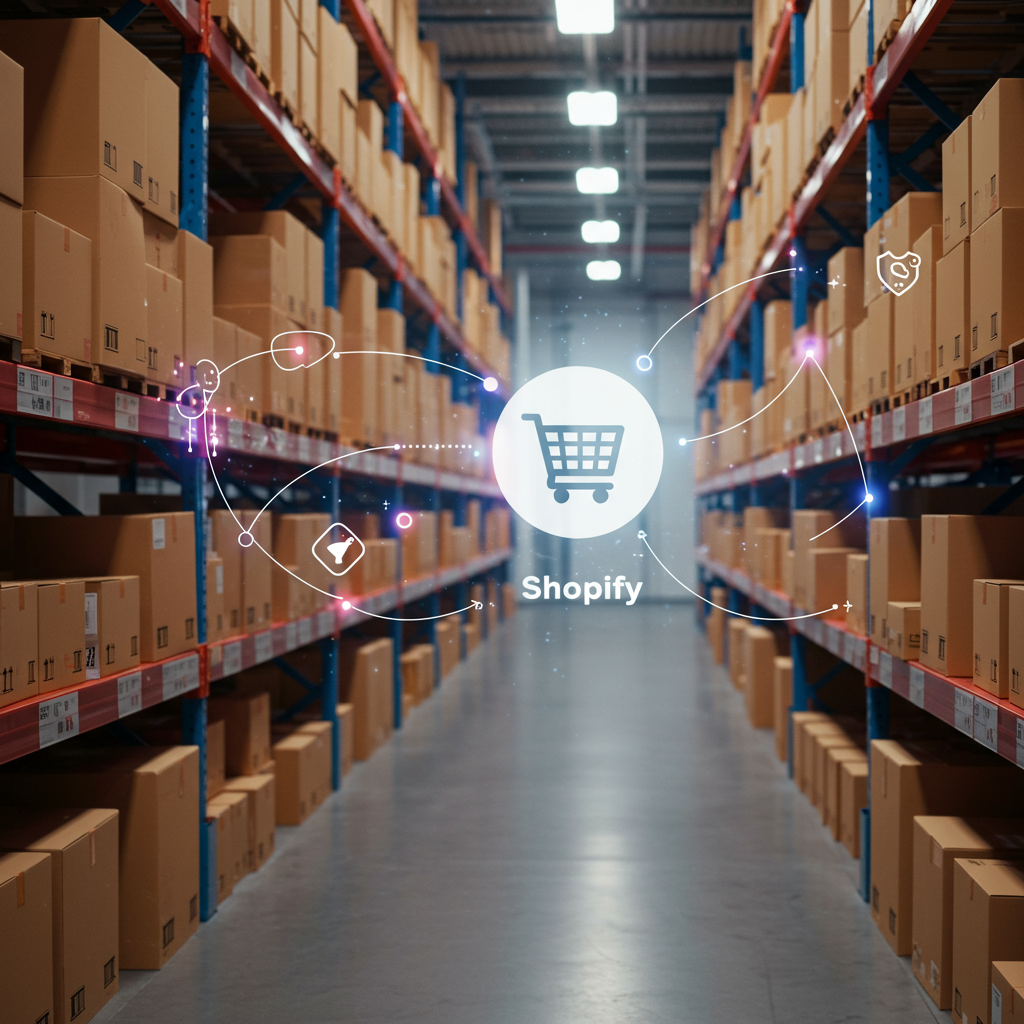Say Goodbye to Stockouts and Overstocking with Intelligent Demand Prediction
As a Shopify merchant, I know firsthand the exhilarating highs of a successful product launch and the crushing lows of a stockout or, conversely, a warehouse full of unsold inventory. Managing stock levels is a constant tightrope walk, isn’t it?
For years, many of us have relied on intuition, spreadsheets, and basic sales reports to guess what our customers will want next. While these methods might work for small operations, they quickly become unsustainable as your business grows.
The truth is, traditional inventory management is often reactive. We order more when we’re running low, or we over-order based on a hunch, leading to a cycle of missed opportunities and wasted capital.
This is where AI-powered inventory forecasting steps in, offering a revolutionary approach to a perennial problem. It’s not just about predicting; it’s about optimizing your entire inventory lifecycle.
Let’s talk about the pain points we all face. First, stockouts. Imagine a customer lands on your Shopify store, finds the perfect item, adds it to their cart, only to see “Sold Out” at checkout.
That’s not just a lost sale; it’s a frustrated customer who might never return. It damages your brand reputation and sends them straight to a competitor who *does* have the item in stock.
On the flip side, overstocking is equally detrimental. Holding too much inventory ties up valuable capital that could be invested elsewhere, perhaps in marketing, new product development, or even just improving your cash flow.
Excess inventory also incurs carrying costs – storage fees, insurance, potential obsolescence, and the risk of damage or theft. It’s a silent killer of profit margins.
So, what exactly is AI-powered inventory forecasting, and how does it solve these dilemmas? At its core, it leverages machine learning algorithms to analyze vast amounts of data.
Unlike simple moving averages or gut feelings, AI considers a multitude of factors: historical sales data, seasonality, promotional activities, marketing campaigns, economic indicators, even weather patterns, and social media trends.
It identifies complex patterns and correlations that are impossible for the human eye to discern, providing highly accurate predictions of future demand for each of your products.
For us Shopify merchants, this technology is particularly transformative. Our stores generate a wealth of data, from customer behavior to product performance, which AI can readily consume and process.
Integrating AI forecasting with your Shopify store is often seamless, thanks to the robust app ecosystem. This means you can leverage sophisticated analytics without needing to be a data scientist yourself.
The benefits for your Shopify store are profound and immediate. Firstly, you can virtually eliminate stockouts. Imagine always having the right product available at the right time.
This leads to happier customers, increased conversion rates, and a significant boost in sales. Your customers will learn to trust that you consistently deliver.
Secondly, you’ll drastically reduce overstocking. By knowing precisely how much to order, you free up capital, minimize storage costs, and reduce the risk of having to discount old inventory.
This optimization of cash flow is critical for any growing business. You can reinvest your capital more strategically, fueling further growth rather than having it sit idle in a warehouse.
Beyond just stock levels, AI forecasting streamlines your entire operational workflow. It automates the tedious process of manual demand planning, allowing you and your team to focus on strategic initiatives.
You’ll move from reactive decision-making to proactive, data-driven strategies. This isn’t just about inventory; it’s about gaining a competitive edge in a crowded market.
How does this integration typically work with Shopify? Most AI forecasting solutions are available as apps in the Shopify App Store. They connect directly to your store’s data via API.
This allows them to pull in your sales history, product information, and customer data, and then push back recommended reorder points and quantities directly into your inventory management system.
When choosing an AI forecasting solution for your Shopify store, look for accuracy, ease of integration, comprehensive reporting, and excellent customer support. Scalability is also key – ensure it can grow with you.
Implementing it usually involves a few steps: first, ensuring your existing Shopify data is clean and accurate. Then, selecting and integrating your chosen app.
The AI will then begin to learn from your historical data. It’s not a “set it and forget it” tool; you’ll want to monitor its recommendations and provide feedback to continuously refine its accuracy.
While the benefits are immense, remember that data quality is paramount. “Garbage in, garbage out” applies here. Ensure your product data and sales records are well-maintained within Shopify.
What do you think about the potential of AI-powered inventory forecasting for your Shopify business? I’d love to hear your thoughts.
In conclusion, embracing AI-powered inventory forecasting isn’t just an upgrade; it’s a fundamental shift in how you manage your Shopify business. It empowers you to make smarter, faster, and more profitable decisions.
It’s about moving beyond guesswork and into a future where your inventory is always perfectly aligned with customer demand, ensuring maximum profitability and customer satisfaction.
Don’t let stockouts or overstocking hold your Shopify store back any longer. Explore the power of AI and transform your inventory management today.






